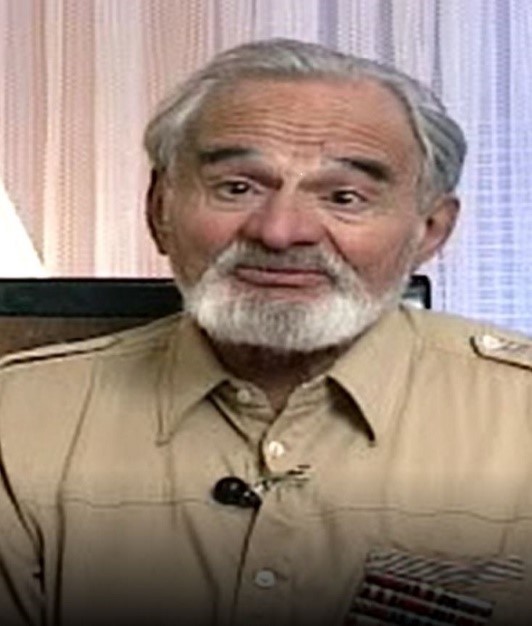Aizik Lenchner was born in 1923 in Minsk, as one of five children. His father Yakov, a cobbler by trade, was a native of Poland; the family had many relatives in the Polish Republic, and was therefore deemed suspicious by the Soviet authorities. In the 1930s, Aizik's father began to work at a shoe factory. The family was Yiddish-speaking, and until the late 1930s Aizik's Russian was poor. At the age of six, the boy began to attend a cheder, but half a year later his parents withdrew him from it, fearing repression. In 1938, Aizik finished eight classes of a Yiddish school; that year, the school was closed.
On June 22, 1941, the Soviet-German War broke out. Two days later, Aizik, together with a company of like-minded peers, showed up at the recruitment office and asked to enlist in the Red Army. The boys were rejected, and on June 28 the Germans entered Minsk. In July 1941, the Lenchner family was incarcerated in the Minsk Ghetto. On November 6-7, during the first massacre ("the Pogrom") in the ghetto, Aizik and his father miraculously survived, but the rest of the family – Aizik's mother Reizl and his four siblings – perished in the Nazi massacre. Aizik made several attempts to escape from the ghetto and join the Soviet partisans, but only in May 1943 was he able to do that. He then joined the 106th partisan unit, under the command of Sholem Zorin, and was one of the few armed fighters in that large Jewish family camp, which was located in the Naliboki Forest.
On July 3, 1944, the area of Minsk was liberated by the Soviets, and on July 23 Aizik Lenchner was drafted into the Red Army. He was attached to the 77th Guards Rifle Regiment, as the charger of an anti-tank cannon.
"I volunteered;" - recalls Lenchner, – "I maintained that I had to take revenge on the Germans for my family; I could not sit idle" .1
Lenchner's active frontline service began on August 11, 1944; he was to serve with the so-called "tank drops", infantry units riding into battle on tanks. Four days later, he was wounded in the leg. With great difficulty, he managed to rejoin his division, only to be accused of self-mutilation. He was told: "You are Jewish; hence, you must have shot yourself to defect from the battle; you will be court-martialed." Lenchner's imminent execution by firing squad was averted when he was on the operating table: The surgeon extracted a shell fragment from his leg; that was the kind of wound that a man could not possibly inflict upon himself. In 1945, Lenchner took part in the East Prussian offensive of the Red Army, in the operations for the capture of Königsberg and Pillau. In April 1945, Lenchner was seriously wounded, and narrowly avoided a leg amputation. This final wound marked the end of Lenchner's active service: He was discharged from the hospital only in the summer of 1945, when the war was already over.
In the course of the war, Aizik Lenchner was awarded the Order of Glory, 3rd class, and a number of medals, including "For the Capture of Königsberg."
After the end of the war, Lenchner completed some law courses and worked as a legal advisor. During the Stalinist anti-Jewish campaign of 1948-53, the authorities attempted several times to have him expelled from the Belorussian bar association, on the pretext that he could have survived the Minsk Ghetto only by collaborating with the enemy.
In 1979-80, Aizik's children immigrated to the United States, and in 1989 he followed in their footsteps. He lived in Far Rockaway, Queens, NYC.
- 1. YVA O.93/43870







